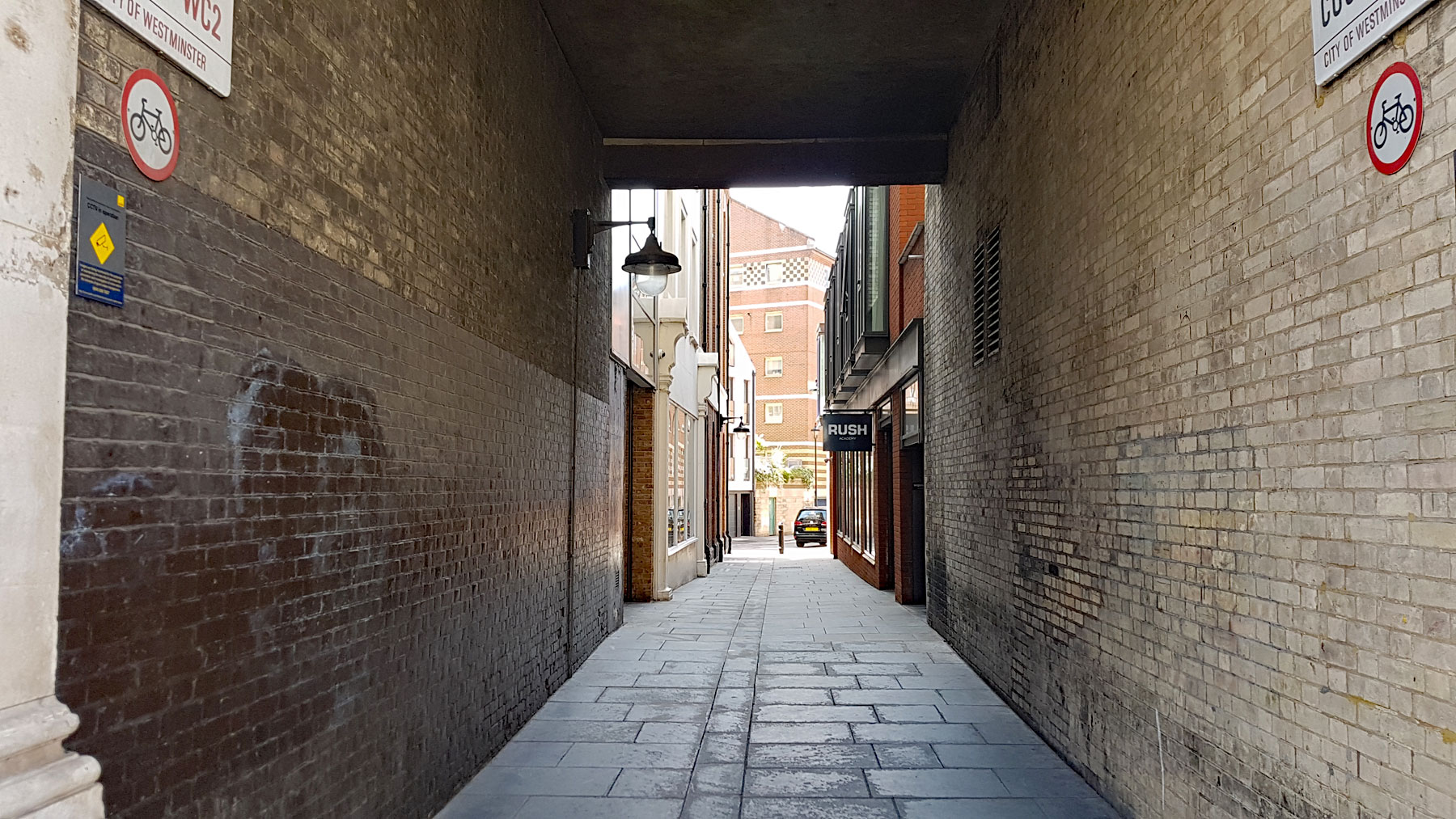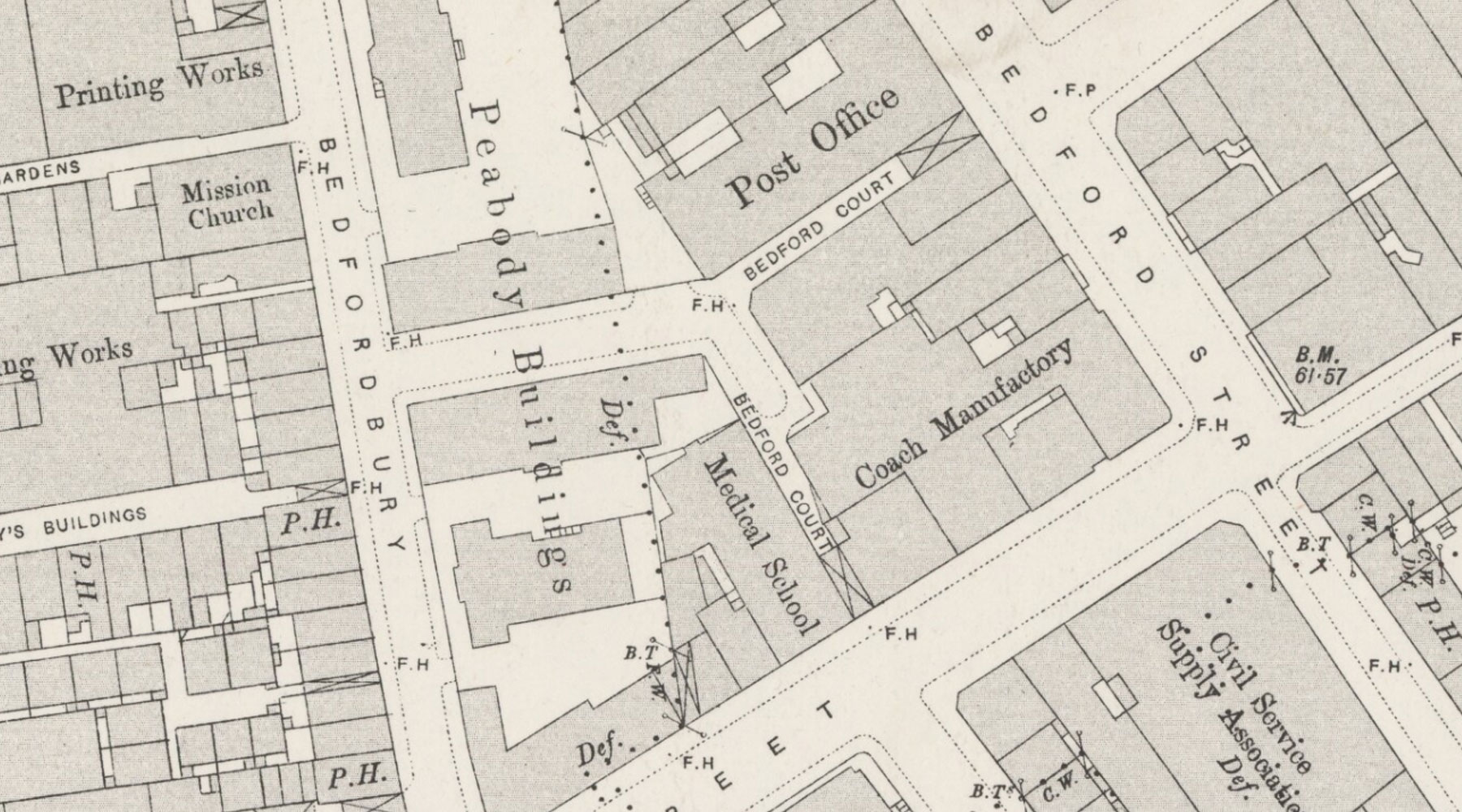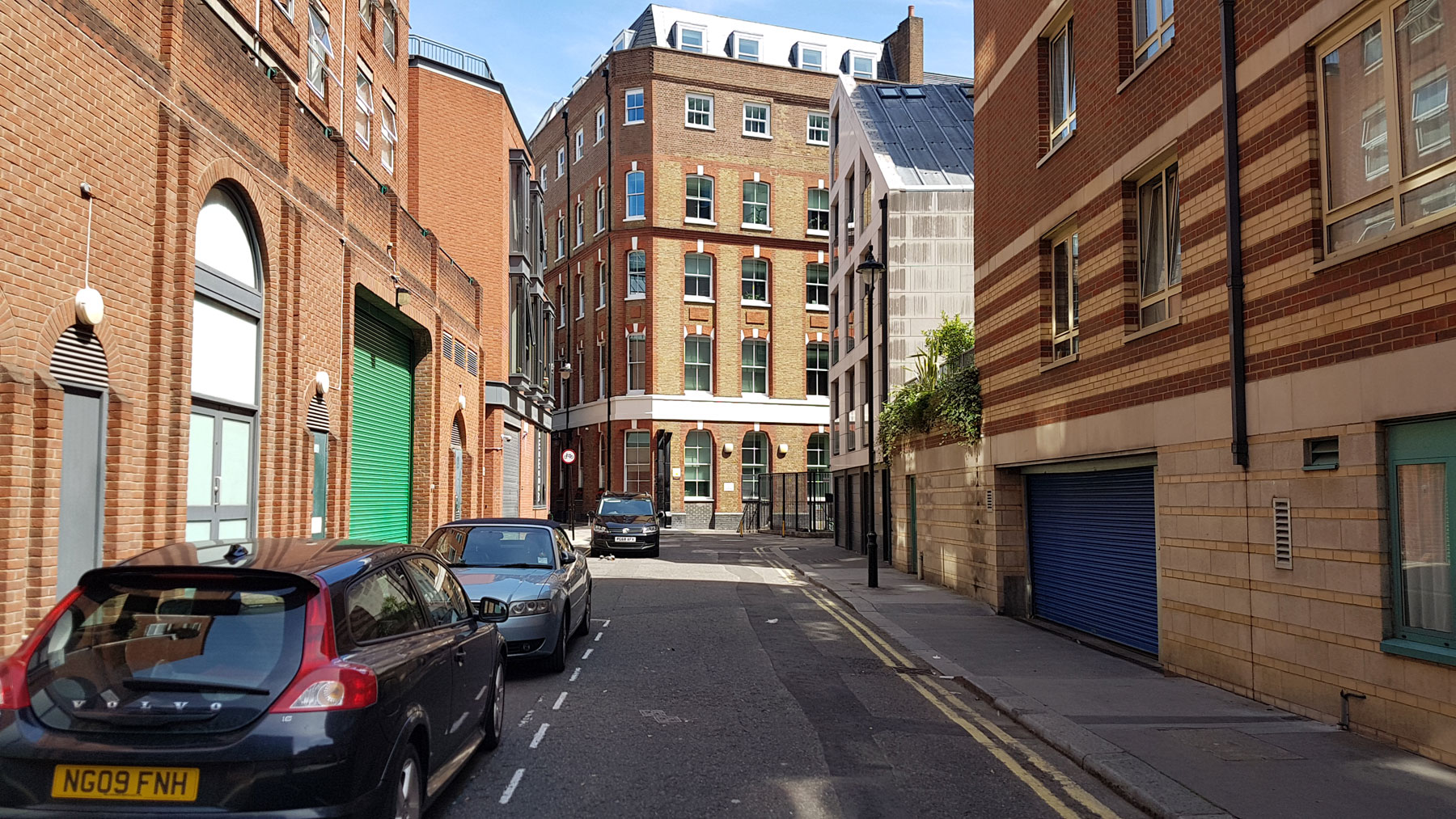This is an alley that leads off from busy Covent Garden through to a much quieter patch of residential housing.
The alley sits in the heart of the city of Lundenwic, the once-lost trading port and city that existed between 600AD and 900AD while the City of London was abandoned, and archaeology since the 1980s has uncovered a lot of Saxon remains in the surrounding area.
Lundenwic itself was pretty much abandoned though after 900AD when the City of London was reoccupied and the area returned to fields and a few small clusters of housing along the road between Westminster and the City.
It was only when the 3rd Earl of Bedford started developing the area to the north of Strand in around the 1630s that streets and houses reappeared here once more.
Bedford Court itself emerged in the 17th century as the newly built-up area was redeveloped to open up a passage behind the houses.
In the 1800s, the area was still mostly small houses and workshops, and Bedford Court was a much shorter passage lined with houses.
A century later and the area had acquired most of its current layout, with much larger commercial properties on the eastern side, and the clusters of small houses replaced with large blocks of flats owned by the Peabody Estate taking over the western half.
The grand building that sits above and beside the alley facing onto Bedford Street has a symbol above the ground floor of a VR in a wreath that may look vaguely familiar. You can find it on surviving Victorian-era post boxes, and it’s on this building because it used to be the area’s Post Office.
Built in 1883-84 to a design by James Williams, it was described by Pevsner as being built in the style of “remarkably serious Roman High Renaissance”.
The original sorting office at the rear was demolished in the 1980s when most of the building was extensively altered, leaving just the facade as the original. The very modern red brick building behind which now lines the alleyway was built in 2009 to replace the 1980s office block.
To the south side of the alley is another large building that is today mainly facade, being built in 1863 to a design by S.S. Teulon, but over the past 150 years, the various units behind were merged into one large building, which was significantly rebuilt in 1980 and 2004.
Where the alley opens up to a road is lined with large blocks of flats.
The buildings, owned by the Peabody estate look modern, and that’s because the Victorian era estate was rebuilt in the early 1980s and 1990s as a mix of sheltered and general housing.
The relatively new looking white-clad block of flats with a sloping roof replaced an old garage on the site, and the sloping roof was a compromise to allow daylight into the windows of the building next door.
So today the alley lack much in the way of history to be seen, but is a good mix of commercial, and right in the heart of the west-end residential housing for local workers.












I live one minute from this alleyway, and have often used it. Thank you for letting us all know its history, and suggesting nearby places of interest. You did not mention Godwin’s Court, which runs (obscurely) from New Row to The Strand. This alley has a very nice old bow-windowed building on it, and the entire area is still lit by gas lamps.
(In normal times, this neighbourhood is already very busy—and we love it!)
Goodwin’s Court runs from St Martins Lane to Bedfordbury, and I wrote about it a previous article which you can read here.